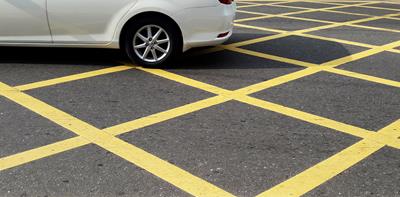
Whether it’s getting behind the wheel at night, driving in heavy rain, or tackling a busy road you’re not familiar with, driving can be stressful.
If you’re feeling worried about getting in the driving seat, you’re not alone. In fact, a fear of driving is the fifth most common phobia in the UK, according to a survey by Anxiety UK.
Specific triggers can spark panic. Take joining the motorway, for example. Around eight million of us hardly ever drive on the motorway and around 380,000 never do, according to research from the RAC.
However, there are simple steps you can take to help you regain your confidence and reduce your anxiety while driving.
1. Joining motorways
Motorways are safer than many people realise. As they’re well-designed and engineered, they’re much safer than single carriageway A roads.
But many people are fearful of dual carriageways. Simon Williams, spokesperson for the RAC, says: “Those who are loathe to drive on the motorway often find it daunting because of the speed everyone is travelling at, while some believe they are at greater risk of being involved in an accident; and, of course, there are others who simply don't have the confidence to do so.”
In reality, this kind of driving doesn’t need to be avoided and “with the right instruction and advice, plenty of care and practice, it is possible to overcome motorway confidence issues,” says Simon.
Motorway driving is not required in UK driving tests, but you can now practise in your lessons. There is also the Pass Plus course, which offers motorway driving and may also help with lowering your car insurance costs, although its price is usually around £200.
2. Reverse and parallel parking
Parallel parking is the trickiest of all driving manoeuvres, according to the AA, and it can bring both seasoned and first-time drivers out in a sweat.
If parallel parking or reversing fills you with dread, get out and practise as much as possible. Choose a quiet street or empty car park to start with and try out the manoeuvre as many times as you wish until you’re confident in the basics.
You can then go to a slightly busier area and keep practising, building up your confidence slowly by gradually choosing areas where there are more cars.
3. Busy cities or unknown roads
If you’re driving somewhere for the first time, the fear of getting lost may be very real, especially if it’s busy.
Ian McIntosh, chief executive officer of RED Driving School, advises taking it slow, studying the area beforehand to get an idea of where you’re going, and making sure you keep a map in your car at all times in case your sat nav or smartphone loses signal or battery.
“Give yourself plenty of extra time to get where you need to be so that you can take your time. If it’s estimated it takes an hour to get from A to B, allow 90 mins so you won’t get stressed in heavy traffic,” he adds.
4. Driving at night
Another pinch point for nervous drivers can be driving at night but, the more you practise doing this, the easier it will become.
“A good way to ensure that you feel confident when driving in the dark is to check, before you leave, that all your lights are working, and your windows and mirrors are clean,” Ian advises. “This will maximise your visibility and help you feel more confident on the road,” he adds.
5. Children in the back
If driving with children in the back makes you anxious, then make sure you’re as prepared as you can be and have done all the relevant safety checks.
This includes making sure you have the correct car seat or booster for your child.
With older children, plan activities for them in advance to keep them entertained and to stop them distracting you. There are lots of car games they can play and remember to schedule in regular breaks.
6. Bad weather conditions
Driving in bad weather can be daunting even for the most experienced driver. Ian advises being as prepared as possible before you set out.
He says: “For a lot of people, driving in bad weather, such as rain or snow, fills them with fear.
“To overcome this and to feel more prepared for your drive, before leaving the house de-ice your car and make sure that the engine is warmed up.”
Checking the route you’re taking and looking at the local weather forecasts before you set out will also help you to be more prepared for any eventuality. Also, keep in mind that if the weather gets too severe, you can always pull over and wait for it to clear.
Where can I get extra help?
If your anxiety is preventing you from getting behind the wheel, read more at anxietycare.org.uk/.
There are a number of courses designed to help motorists regain their confidence when driving, which provide refreshers on the basics.
Before you book a course, ask to speak to the instructor and explain your situation, then ask for a quote. This will give you an idea of how the course will work and if it’s right for you. It’s worth checking a few different companies before committing to make sure you’ve picked the one which best suits your needs.
No £25 admin fee
When you update your policy online, e.g. amend driver, address or car details.
To find out more about staying safe on the roads, go to Solved.
You can find out more about our car insurance here.

